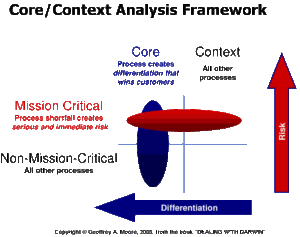
July 29, 2020
In the digital world,
being remote is increasing employee productivity
When the coronavirus pandemic forced most office employees to work remotely, managers were convinced that productivity would collapse. They thought the multiple potential distractions from childcare to household chores would constantly interrupt focused attention on work. 4 months later, the early evidence shows that employees have actually become more productive working outside the office. Managers across a variety of businesses have documented that projects are being completed ahead of schedule and workers are volunteering to take on new assignments.
In the Morning Consult survey conducted June 16th- 20th with 1,066 workers who said their jobs could be done remotely generated these results:
- 66% said they enjoyed working from home
- 49% said they were more productive working from home vs. 32% who said there were not
- 44% said the quality of their work improved vs. 27% who said it had not
- 75% are happy with the way their companies handled the transition
- 59% would be more likely to apply to a job that offered remote work
- 87% want to keep working from home some number of days even after it is safe to return to the office
While it’s tempting to say that “one Robin does not make a Spring,” I think there is an early argument to be made that being remote has started to impact an even more important employee productivity metric than location. It is the ratio of time employees spend on Core work versus Context work.
The Core & Context Framework
My brother, Geoffrey Moore, developed the core and context framework as shown below to draw clear distinctions between the different types of work employees are engaged in across any enterprise. As he states:
- Core are those activities e.g. product development & sales that increase a company’s sustainable competitive advantage and directly impact the operating and financial performance of the company. The goal is to create true differentiation by giving customers what they want and cannot get from anyone else.
- Context are all the other activities e.g. finance & legal that must be done but do not directly drive increased revenues, margins, and profits. The goal is to whenever possible outsource context work in order to redeploy resources, time, and budget against core work.

Over the past three decades, I have seen first-hand that the vast majority of employees including CEOs and other C-Suite leaders spend 80% of their time on context and 20% on core.
I think one of the reasons for the recent increase in employee productivity is when companies are struggling to survive, they are forced to eliminate as many non-productive, context activities as they can. This means that employees are increasingly engaged in work that makes a real difference to the company’s survival. Simply put working on core is much more productive and rewarding than working on context.
Goodbye continuous interruptions – Hello increased productivity

Another major factor on productivity, is the amount of uninterrupted time an employee can spend on a specific task or piece of work. The question going forward is are there more potential interruptions working in an office vs. working remotely. On the remote front, the answer is clearly skewed based on whether workers are dealing with children/family at home.
On the office front, recent studies have documented that the average employee switches tasks every three minutes, is interrupted every two minutes and has a maximum focus stretch of 12 minutes. The studies also show that when someone is interrupted it takes an average of 23 minutes to resume their focus.
Emails, text messages, and employee collaboration tools are constant sources of interruptions throughout everyone’s day regardless if the are at home or at the office. Without controlling these interruptions, it is virtually impossible to bring anyone’s full and deliberate attention to accomplishing critical tasks in a timely manner no matter their location.
Virtual collaboration vs. face-to-face collaboration

A recent McKinsey survey of more than 200 companies across multiple industries found that over 75% of companies were significantly reducing funding for innovation to concentrate on four things:
- Shoring up their core business
- Pursuing known opportunity spaces
- Conserving cash and minimizing risk
- Waiting until “there is more clarity”
One of the conclusions I draw from these survey results is that most companies still believe face-to-face collaboration is a more effective source of innovation than virtual collaboration.
However, Aaron Levie, CEO of Box software, has found “remote work has increased both productivity and innovation at his company. Instead of generating ideas with small groups in conference rooms or when people happen to run into one another, the company is having conversations with larger and more diverse groups on Slack. We’ve taken what would have been a five to ten person project to a 300-person idea generation machine with people who never would have participated in this project – even interns.”
Will there by a new normal going forward?

The COVID19 pandemic forced most companies to quickly shift their employees to a remote work model virtually overnight. For many individuals this was a radical change to their always onsite workplace habits and rituals. For others, it was a welcome extension of some version of their hybrid onsite/remote workplace model.
Habits, especially lifelong ones, are not easily changed so it is reasonable to expect there will be a significant shift back to onsite work by employees who favor that model when it is safe to do so. As such, I think the new normal dialogue should shift from where work gets done to how work gets done. Productivity will be defined by the type of work employees do not where they do it. Sustainable competitive advantage will increasingly go to those companies that can enable their employees to spend more time and effort on core activities not context activities regardless of where they are doing the work.
As always, I am interested in your comments, feedback and perspectives on the ideas put forth in this blog. Please e-mail them to me at pdmoore@woellc.com. And, if this content could be useful to someone you know please share it here:



